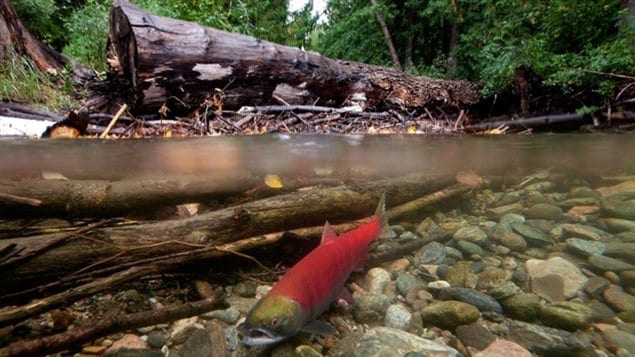Record warm temperatures have been recorded along the Pacific coast of North America this past week.
Last year also saw record heat in and around the Pacific.
The federal agency known as Fisheries and Oceans Canada (DFO) has just released a report saying the high temperatures will result in declines in Pacific salmon for at least the next three years.
“We’ve seen the warmest winter temperatures [and] water temperatures ever observed in the northeast Pacific in 2014 and 2015,” said Dr. Ian Perry, a research scientist with the DFO.
The report said five species of salmon in British Columbia will be negatively affected: sockeye, pink, chinook, coho, and chum.
Warm temperatures bring predators, pathogens, poor food supply
The DFO panel said at a Monday press conference that the warmer ocean currents have disrupted the regular food supply by bringing smaller and less nutritious food supply to the Pacific salmon. At the same time the warmer water is attracting predators like shark and mackerel that feed on young and old salmon.

Warmer temperatures and less precipitation have also had a negative effect upon the salmon through lower river levels and higher water temperatures which reduces migration ability along with survival, and spawning.
Temperature anomalies are expected to continue, they said, bringing along with them salmon-attacking pathogens that thrive in warmer water.
Many British Columbia salmon fishing areas will be closed to commercial operations and in rare cases only local aboriginal fishing will be allowed.
In 2012 the Cohen Commission looked into declining Pacific salmon stocks and issued a number of recommendations.
Chief Bob Chamberlin of the Union of BC Indian Chiefs (UBCIC), who observed the press conference on Monday morning, was quoted in the National Observer saying the “principles” of the Cohen report are what’s going to save B.C. salmon, but first, DFO needs to talk about climate change. The Cohen report — and in particular the 2005 Wild Salmon Policy — must now be examined through the lens of global warming, he explained, and expanded upon in collaboration with First Nations.
Additional information-sources
National Observer- Elizabeth McSheffrey
http://www.nationalobserver.com/2016/06/20/news/expect-decreased-salmon-stocks-bc-year-dfo
Cohen Commission
http://cohencommission.ca/about/
DFO- wild salmon policy
http://www.pac.dfo-mpo.gc.ca/fm-gp/species-especes/salmon-saumon/wsp-pss/index-eng.html







For reasons beyond our control, and for an undetermined period of time, our comment section is now closed. However, our social networks remain open to your contributions.